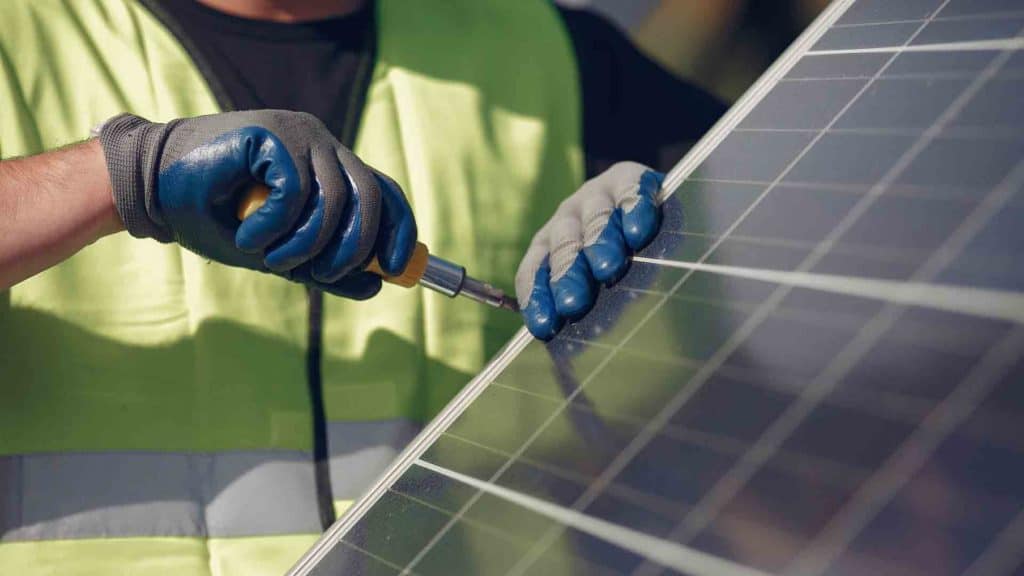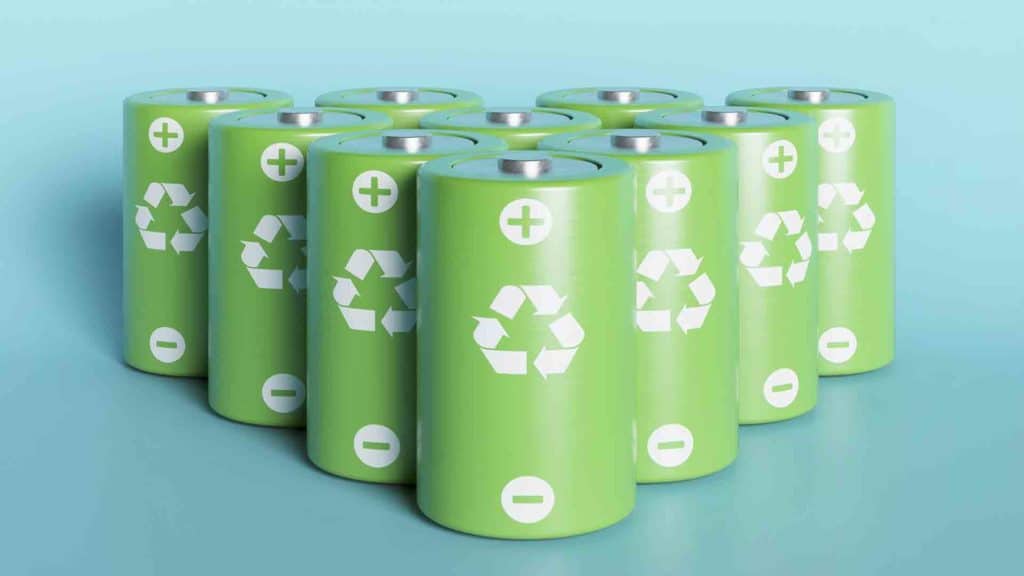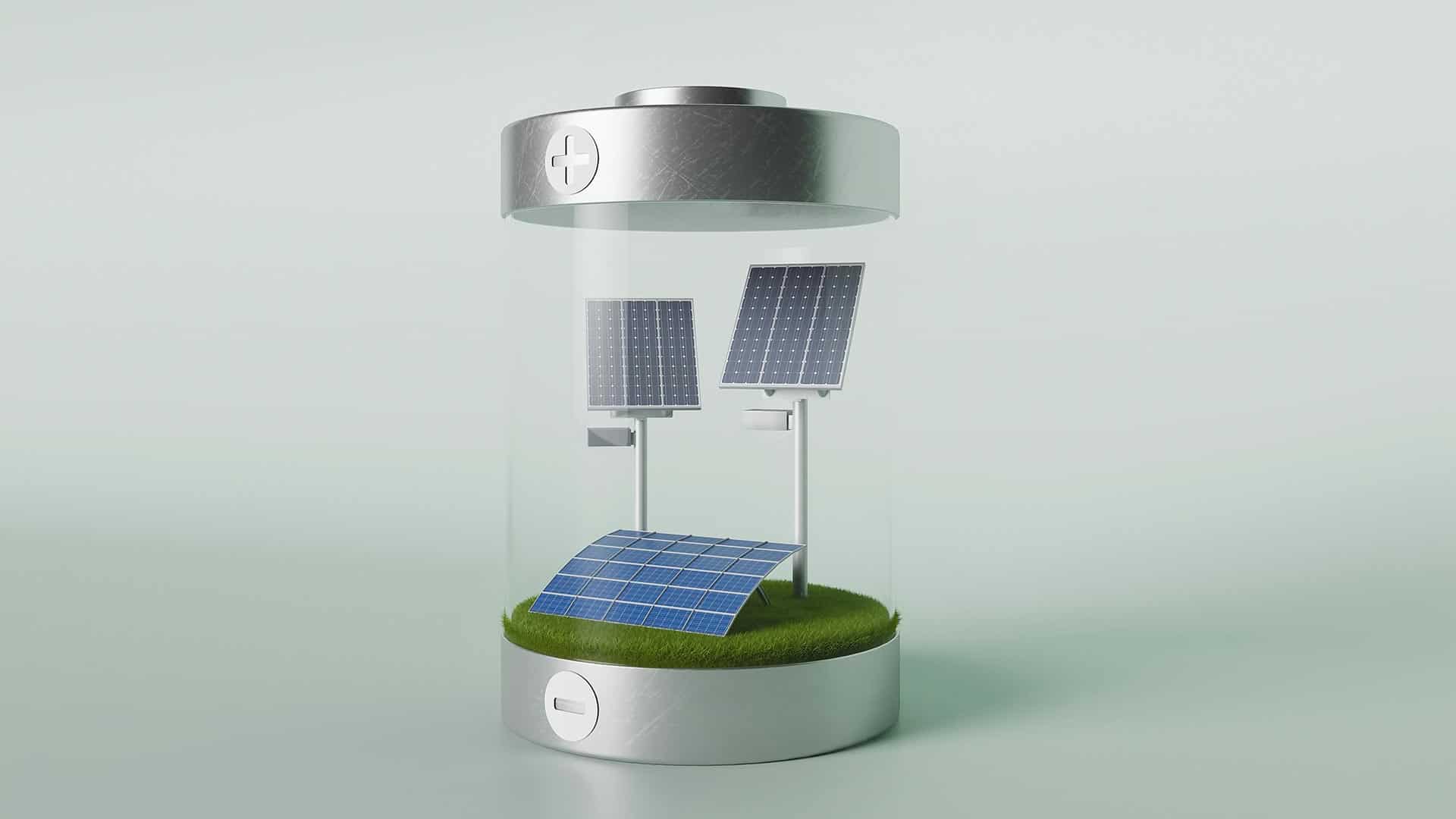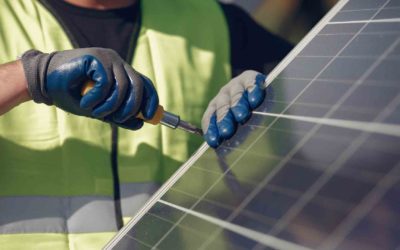How Do Solar Panels Work?
A solar panel converts sunlight into electricity. When you look up at the sky, you see countless billions of photons hitting the earth every second. These photons are called electromagnetic radiation. They come in different wavelengths, like red, blue, green, infrared, ultraviolet, etc. Some of those wavelengths are visible, while others cannot see.
When the sun shines, the energy from the photons hits our atmosphere. Our atmosphere scatters the light out over the entire planet. Most of the scattered light never reaches the ground. This is because most of the scattered light travels in straight lines. However, some light bounces off particles in the air and gets redirected towards the ground. This is why you can sometimes see the sunset or sunrise even though the sun is still shining.
The light that does reach the ground is called terrestrial light. Terrestrial light comprises three parts: visible light, infrared light, and radio waves. Visible light is what we call white light. Infrared light is heat. Radio waves are sound.
Visible light makes up about 5% of the total amount of light that reaches Earth. Infrared light makes up about 2%. And radio waves make up about 93% of the remaining 3%.
Solar panels work by absorbing the visible light part of the sunlight. Then the absorbed light is converted into an electrical current. The process takes place inside a solar cell. Inside the solar cell, there are layers of semiconductors. Semiconductors are materials that conduct electricity but don’t allow electrons to pass freely through them. Semiconductor material must be doped to enable electrons to move quickly through them. For example, silicon wafers used in solar cells are heavily doped. When it comes to versatility and convenience, folding solar panels are an exceptional choice for renewable energy enthusiasts.

What is a Solar Panel Made of?
What are solar panels made of? And what makes them different from traditional electricity generation methods? Let’s take a look.
First, let’s talk about the essential components of solar panels. A solar panel has two main parts: the front and back sides. On the front side are many thin pieces of metal called “strings”. Each string is connected to an individual solar cell. The strings connect with wires. Together they form a grid.
There is another set of strings on the backside of the solar panel. Those strings connect to the positive terminal on the solar cell. The negative terminal connects to the wire that carries electricity away from the solar cell.
In addition to these two sets of strings, wires connect the solar cell to a battery. The battery stores the extra electricity generated by the solar cell. Additionally, storing excess energy in a battery can help maximise the efficiency of the solar panels and reduce waste, ultimately leading to cost savings over time.

How Does a Solar Panel Generate Electricity?
A solar power system is used to generate electricity from sunlight. They consist of photovoltaic cells that convert light into usable electrical energy. This process is called the photoelectric effect. A home solar system installed by a professional solar installer converts sunlight directly into electricity without needing any additional fuel.
Inverters are needed to change the DC generated by the solar panel into an AC. These inverters use semiconductors to regulate the flow of electrons.
The output voltage of a solar system depends on the type of solar panel you choose. You can buy a single module that produces DC electricity or a complete array that generates both DC and AC electricity.
A solar panel consists of many individual cells known as modules. Each module contains silicon wafers coated with different layers of materials. When exposed to sunlight, each layer absorbs specific wavelengths of light and transmits others. Silicon absorbs visible light while copper reflects it. Copper is added to reflect infrared radiation emitted by the sun.
Each cell is wired together to form a string. Multiple strings are bundled together and wired to make larger arrays. Arrays are further combined to build large solar farms.




